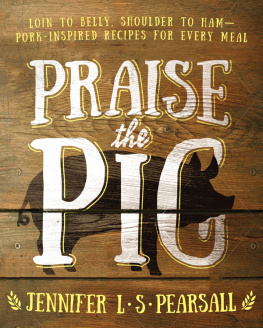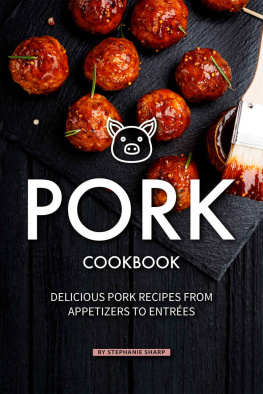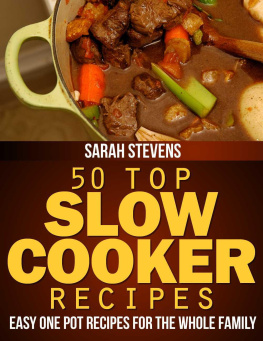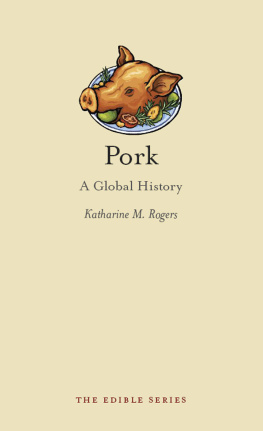Copyright 2015 by Jennifer L. S. Pearsall
All rights reserved. No part of this book may be reproduced in any manner without the express written consent of the publisher, except in the case of brief excerpts in critical reviews or articles. All inquiries should be addressed to Skyhorse Publishing, 307 West 36th Street, 11th Floor, New York, NY 10018.
Skyhorse Publishing books may be purchased in bulk at special discounts for sales promotion, corporate gifts, fund-raising, or educational purposes. Special editions can also be created to specifications. For details, contact the Special Sales Department, Skyhorse Publishing, 307 West 36th Street, 11th Floor, New York, NY 10018 or .
Skyhorse and Skyhorse Publishing are registered trademarks of Skyhorse Publishing, Inc., a Delaware corporation.
Visit our website at www.skyhorsepublishing.com.
10 9 8 7 6 5 4 3 2 1
Library of Congress Cataloging-in-Publication Data is available on file.
Cover design by Rain Saukas
Print ISBN: 978-1-63450-435-5
Ebook ISBN: 978-1-5107-0039-0
Printed in China
DEDICATION
To the pigs, of course, for they gave all.
TABLE OF CONTENTS

INTRODUCTION
W ithout a doubt, Praise the Pig grew out of my first book, The Big Book of Bacon (Skyhorse Publishing). That first book started as a joke. Someone in my social media circles asked for advice on cooking a snow goose, a bird that can sometimes be less than a culinary delight. Of course, that sometimes means that other times its grand, but if you dont cook a bird like that on a regular basis, it can be a challenge to get it right.
Now, Id cooked snow goose to rounds of applause before and, so, offered up my recipe to the comment stream, ending with, Be sure to cover the birds with bacon. For some reason, that struck a chord with people. Soon, the words just add bacon were being advised for everything from poached pears to pancakes to fixing whatever is wrong with your spouse. People plastered my Facebook wall with the meme Bacon is the duct tape of the kitchen; bacon, it seemed, was a cure-all for everything.
So thats how the first book started and, well, this second one just seemed a natural route to take from there. I actually intended to be a little avant-garde, if you will, with this one. I thought about pts and headcheeses and things that used cheeks and feet and hocks and tails. But the more I thought about it and the more reading I did into recipe origins that used such parts, I realized that they just werent accessible. I dont mean just the porcine parts themselves, but also the recipes and the tools required to arrive at the tender delicacies that are the art of charcuterie. While I love experimenting with food off the beaten path, I think Im wise enough to know that such a thing isnt everyones cup of tea. So, where did that leave this book?
Accessible really is the key here. Im not just talking about the ingredients, though some will be harder to find than others, just as is the case with any cookbook that doesnt start each recipe with a can of Campbells Cream of Mushroom Soup. When I think about accessible and cooking, Im really thinking that the user has to look at the recipe title, glance over the list of ingredients and think, Yea, I think that would be cool to make and I can pull that off.
Lets face it, dealing with a whole pigs head is intimidating to most of us, me included. Someday Ill tackle thatlike when I have a stove and a pot big enough to accommodate such an ingredientbut that and cheeks and tongues and tails and the entire art of charcuterie are things best designated as specialties, and I didnt think they were right for this book.
That brings me to what this book is then. Well, its a couple things.
Many of the recipes I worked up simply by substituting pork for another meat. One of my favorites, for instance, is the wild rice stew I normally make with roast chicken, but this time made instead with roast pork loin shaved thinand it ended up being delightful. Pork substitution is especially worthy when it comes to ground beef. Now, I love beef. Give me a good steak or a juicy hamburger any day of the week and Im a very happy girl. But when it comes to things like chilies and Bolognese sauces, I slowly transitioned from half beef and half pork to all ground pork. I find the results to be more succulent, the bite between the teeth more tender, the overall flavor profile richer. These are the things you discover when you work on a single-subject cookbook.
If simply substituting pork for beef or chicken were all it took, this book would have been far easier. As it turned out, the more I worked with pork, the more inventive I became with it. Recipes like pork with butternut squash, snow peas, and mushrooms in a tarragon cream sauce is one such example, the tasso and red lentil stew another among many.
Lots of these recipes use meat leftover from a bigger roast, most notably the ham and the shoulder or Boston butt. A big part of the reason for this is because I live by myself and have to think up things to do with the leftovers from these big cuts. For instance, I spend a lot of the spring, summer, and early fall months smoking Boston butts, because I love a good pulled pork sandwich almost as much as I like getting kissed by a handsome guy, maybe more. But after three days of sandwiches, Im still faced with the need to do something else with pounds of smoked pork. Same goes for hamtheres only so many ham sandwiches one can eat so many days in a row. So, as you wander these pages, realize that many recipes came from these bigger cuts. I think this in-depth use of leftovers, for one, gives you a good excuse to cook shoulders and hams outside of once-a-year summer family reunions and Easter. More importantly, though, it provides options, lets your creativity flow, and gets you out of the tenderloin and pork chop route thats easy to fall into because these smaller cuts are so much more, well, manageable.
Sausage is another bit of porky goodness that dominates in this book. Youll find some specialties, like Portuguese chourico and a custom fennel seed and black pepper blend my local butcher makes. Like other more obscure ingredients such as tasso and the like, Im fully aware that you may not have ready access to such treats. However, Ive tried like the dickens to give you a resource if I had one, both a taste and flavor profile for the chosen meat, and a recommendation for a variant and spices that would closely mimic what Ive used.
Its that creativity thats really the point. Im not a professional cook. Ive not spent long hours under the tutelage of Mario Batali, Im not on the board of the James Beard Foundation, and Ive never been on Chopped or Knife Fight or Iron Chef. (On the other hand, Im also far, far away from being nominated as a contestant on Worst Cooks in America, so theres that). What I am is a pretty talented home cook who has a good sense for what goes together. Im also not afraid to step out of bounds, take the foundations of another recipe (or even three), and make it my own.
If I had a hope for this book, its that youd do the same. Dont have an ingredient I listed or dont like one of the components? Switch it out to something that works for you. Yes, in more than a few recipes Ive stressed where a technique or ingredient shouldnt be changed, as they are essential to making the finished product what it was intended to be. But nobodys holding your fingers to the blue flame of your gas stove. Do what you need to in order to make these recipes work for you . Too much cayenne? Substitute it with a little bit of black pepper. I like my meatloaf with extra egg in it, usually one more than most recipes call for. You may not like it that way, and thats okay, skipping the extra wont cost you a thing. None of this book is that hard.












